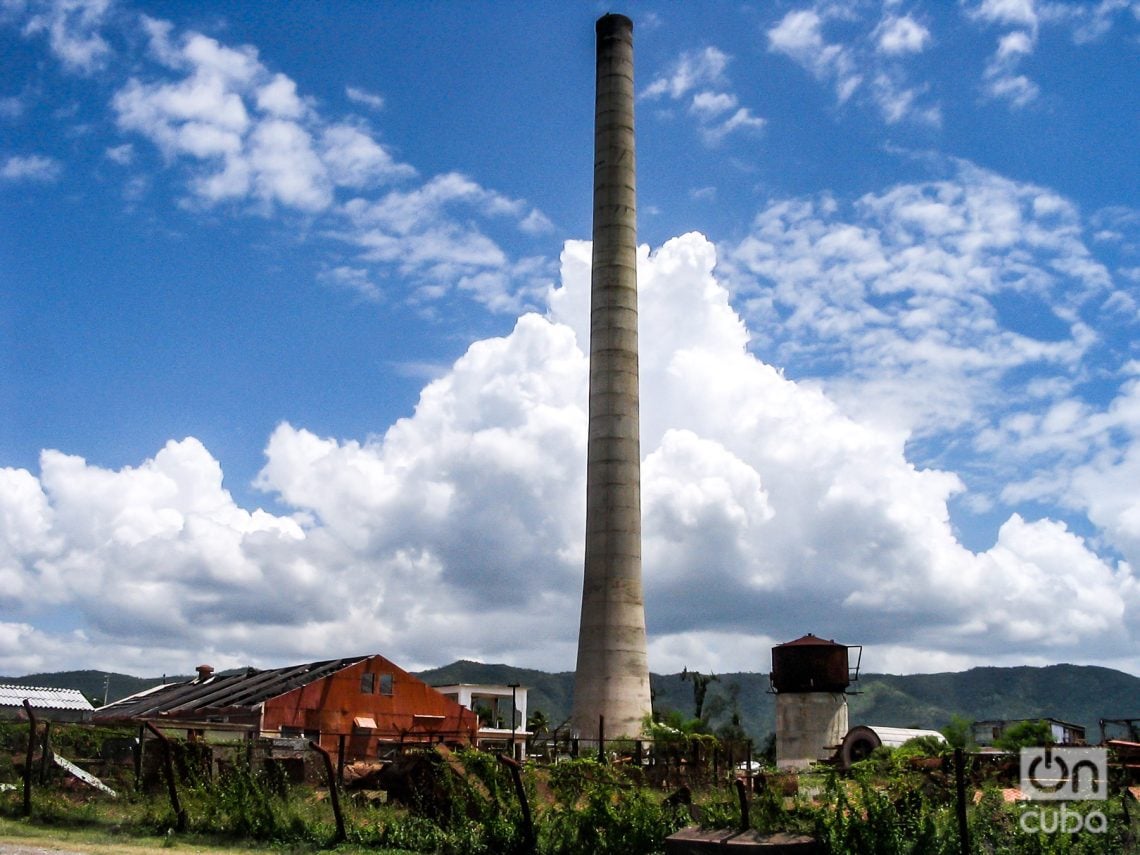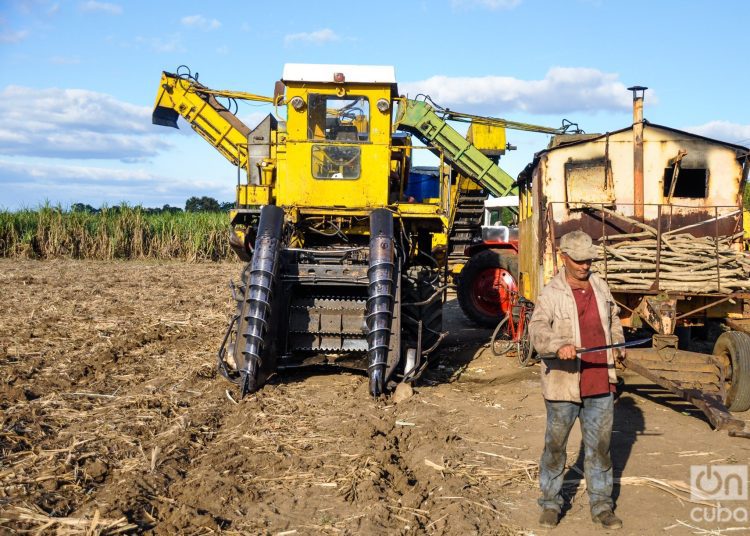The Cuban 2022-2023 harvest promised to be “modest in sugar production,” but with “greater efficiency.” However, the official results have been disappointing. Of the 455,198 tons that were expected to be produced, only 350,000 were achieved. Despite the fact that the goals for that cycle were the lowest in history after 1959, only 77% of what was planned was achieved.
The results of the most recent harvest confirm the downward trend that has markedly been seen in the last five years. In the current harvest, this downward curve has found its worst scenario.
The last two decades
Nobody is unaware that the last two decades have not given the best yields in terms of sugar production. This fact is sensitive to the national identity of a country where, since the 19th century to the 1990s, sugar was the economy’s main product.
The highest figures were recorded in the 1970s, with a record number of 8 million tons produced. In its best years, Cuba came to hold 25% of global sugar production.
However, after the restructuring of the sugar sector in 2002, this figure was drastically reduced. No else could be expected. The process implied the closure of 71 sugar factories out of the 156 existing at that time and redirected the function of 25 of these to the manufacture of derivatives.
The goals of the past were never planned or achieved again. After the restructuring of the industry and until its drastic fall in 2022, Cuban sugar production ended up representing less than 1% of the world quota, with only 1.1 and 1.3 million tons per year.
The exception was seen in 2016-2017 when 1.8 million tons (t) were reached. Since then, production has continued to decline and in the previous harvest (2021-2022) had its first record below one million in the period after 1959.
In the 2021-2022 harvest, 480,000 tons of sugar were manufactured, in round numbers. The plan was for 911,000 t and, with this, only 52% of that goal materialized.
A common factor stands out among all the sugar harvests of the last decade: the divorce between plans and results.
The Cuban president defined as voluntarism to continue “trying to make a harvest that since we planned it we know that it is impossible to fulfill” and whose final result is that “the harvest plans are not fulfilled, and each harvest in recent years has produced less sugar.”
Various causes converge in the deterioration of an indicator for which we were recognized as a nation, and which today shows a dismal performance. Among the main ones that can be pointed out are the aging industrial equipment and the low yields of the sugarcane harvest.

What dark clouds hang overproduction
The country’s highest authorities have recognized that the sugar industry has been going through a long process of “technological involution” since the 1990s. Repeated electrical failures and breakdowns of power plants are the direct consequence of the high degree of obsolescence and deterioration in the technical state of agro-industrial machinery. The last link in this chain is the low levels of productive efficiency.
Added to the lack of new equipment is the lack of spare parts and resources for general maintenance, which has contributed to the execution of repairs that are less and less complete and of lesser, or almost no, quality. The national authorities have affirmed that we are at a time when almost no sugar factory is adequately repaired, and almost none have a balance of resources.
On the other hand, due to the lack of basic inputs for sugarcane agriculture, less sugarcane is planted every time in Cuba and the yield is poorer.
Fertilizers and herbicides required by sugarcane fields, for example, are among the imports affected by the limited availability of foreign currency in the country in the context of an economic and financial crisis that has lasted for almost five years. In the previous harvest, these crops were only able to cover 37% of the needs for both resources.
Programs for the development of alternatives, such as domestically produced biofertilizers, are not enough to offset the import deficit.
Nor is all the cane that is planned cultivated. In 2021, the Azcuba business group reported planting only 69.4% of the planned area. Of the total harvested land, 42% had a yield of less than 30 tons per hectare (t/ha). The country’s average yield at the present time is 39.7 t/ha, a figure widely exceeded by other sugar-producing nations that compete for the international market, such as Guatemala, Brazil and Costa Rica.
The fuel deficit and the instability of the means of transportation (due to spare parts that do not arrive on time on the island) also weigh on the general production process. Both affect the fulfillment of planting plans as well as the supply of the main raw material for sugar mills: sugarcane.
In the current context of economic shortages that Cuba is experiencing, the sugarcane agro-industry has done its part. Human capital, which is at the center of every agricultural process, has not escaped the impact. Labor factors such as a lack of discipline, motivation and a shortage of labor have led to deficiencies in the operation of agro-industrial enterprises.
According to engineer Ángel Luis Ríos, general director of Azcuba’s Productive Chain, “the lack of qualified labor force, especially intermediate bosses” has had an impact on the “lack of discipline and rigor.” In his words, “a group of important breaks has been associated with bad operations” by the staff; and could have been prevented.
Julio Andrés García, president of the Azcuba Sugar Group, affirmed in an analysis of the previous harvest that “the first problem” faced was discipline. In his opinion, with the sugarcane available in the previous harvest, up to “80,000 tons of sugarcane (more) per day” could be delivered, but this was not achieved.
No production, no sugar
The destinations of sugar production in Cuba are, basically, the family basket, tourism, medicines, industrial productions and exports. In this sense, non-compliance with the figures conceived has a direct impact on key sectors that should be well-supplied.
As a result of the continuous decrease in the figures, national consumption (domestic and industrial) is covered more and more narrowly and, of course, the quantities to be exported have also been reduced.
The Cuban population perceives the lack of sugar as never before. As established by the Ministry of Domestic Trade (MINCIN), the distribution of sugar on the island is four pounds per person each month. It is no longer sold freely in the network of national markets, so the alternatives for its purchase are particularly limited. In the year 2022, the sugar that the domestic trade system should have received had an affectation of about 60,000 t, due to the results of the 2021-2022 harvest.
Just to ensure general domestic consumption, between 400,000 and 600,000 t are required. In the current year, the MINCIN had planned the allocation of 310,000 t; of these, 240,500 are for the regulated basket. The recently concluded harvest achieved a total of barely 350,000 t.
So far in 2023, this product has been among those that have reported delays in delivery for the family basket.
Parallel to the impact on the domestic market, international commitments have also been short. It happened in 2022, although the production was higher than the current one. Let’s remember that the island has an agreement to export 400,000 tons per year to China.
The truth is that, as said by Homero Acosta, secretary of the National Assembly and of the Council of State, this “drop in sugar production and exports… has had a negative impact on the Cuban economy.” Particularly because this phenomenon has worsened “at a time when the country is facing a difficult economic situation and needs to increase its income through exports.”
In the words of Acosta, this issue has become a reason for “concern and criticism in the country.” Reality shows us a nation that was recognized as a sugar paradise, and that today barely covers its domestic demand for this product, cannot export, does not meet plans, and has less and less sugarcane. These seem like enough reasons to worry.











People are catching on: sugar consumption is bad for your health. Better find another product.